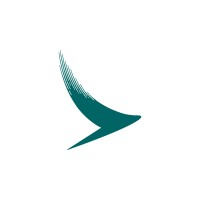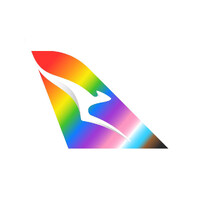Company Cyber Security Posture
NANA
NA Company Details
NA
NA
NA
NA
NA
NA
Scan still pending
NA
NA
Between 200 and 800
This score is AI-generated and less favored by cyber insurers, who prefer the TPRM score.
 NA Global Score
NA Global Score.png)

Company Scoring based on AI Models
| Model Name | Date | Description | Current Score Difference | Score |
|---|---|---|---|---|
| AVERAGE-Industry | 03-12-2025 | This score represents the average cybersecurity rating of companies already scanned within the same industry. It provides a benchmark to compare an individual company's security posture against its industry peers. | N/A | Between 200 and 800 |
Company Cyber Security News & History
| Entity | Type | Severity | Impact | Seen | Url ID | Details | View |
|---|
Company Subsidiaries

NA
Access Data Using Our API

Get company history
.png)
NA Cyber Security News
Ethiopian Airlines Case Settles '2 Minutes' Before Last Hearing
A Chicago damages trial set for a man who lost his immediate family in an Ethiopian Airlines plane crash can be taken off the books because ...
Top Cybersecurity Employers in Ethiopia: Who's Hiring and What They Look For
Discover top cybersecurity employers in Ethiopia, who's hiring, and the qualifications needed. Start your career in Ethiopian cybersecurity ...
OT cybersecurity risk elevated within executive leadership ranks: Fortinet
In addition to trends and insights impacting OT organisations, the report offers best practices to help IT and OT security teams better secure ...
Ethiopian Airlines, Archer Aviation partner to launch electric air taxis
Archer Aviation has signed an agreement with Ethiopian Airlines to deploy its Midnight electric air taxis under the “Launch Edition” programme ...
Celebrating Ethiopian Airlines delivery of the first A350-1000 in Africa equipped with Thales’s AVANT Up IFE
In Toulouse, France, Ethiopian Airlines and Thales celebrated the delivery of the airline's first A350-1000 aircraft, which is also the ...
WestJet Hit by Cyberattack
Canadian airline WestJet said it is dealing with the effects of a “cybersecurity incident” and warned customers about possible service ...
Ethiopian Airlines launches Hanoi route, signs deals with Vietnamese partners
Ethiopian Airlines, Africa's largest airline by network, officially launched a new route connecting Addis Ababa and Hanoi.
Ethiopia Cybersecurity Job Market: Trends and Growth Areas for 2024
Explore Ethiopia's cybersecurity job market trends and growth areas for 2024. Discover education, key skills, and job opportunities in ...
Ethiopian Airlines enhances aircraft fleet with engines by GE Aerospace
The Ethiopian carrier confirmed the purchase of 11 GEnx engines for its new B-787 aircraft, increasing the total number of fleet airplanes ...

NA Similar Companies

Cathay Pacific
Welcome to the official Cathay Pacific LinkedIn page. We have over 200 destinations in our global network, but want to do more than just move you from A to B. We want to take you further in your journey, and ultimately, to move beyond. And we’re here to do what we can to help you discover what’s nex

Shenzhen Airlines
Shenzhen Airlines was founded in November 1992 and started its service on September 17th, 1993. It is a joint-stock Airline Company specializing in air passenger, cargo and mail transportation and now it is China's 5th biggest carrier. Shenzhen Airlines has managed more than 95 aircrafts by Jan, 201

SAUDI AIRLINES
At Saudia Group, we're on a mission to inspire people to go beyond borders. Our purpose is rooted in unlocking human potential and connecting the world in ways never thought possible. We are committed to reshaping the aviation ecosystem in our region and beyond, by embracing innovation and a custome

Indian Airlines Limited
Indian Airlines Ltd has been merged with Air India Ltd. The consolidated company is named as National Aviation Company of India Ltd. It operates under the marketing name of Air India. As of now the Airline operates under both AI as well as IC code. Air India has a subsidiary Low cost carrier Air Ind

Iberia
Iberia is Spain’s number-one airline group and the leader in the Europe-Latin America market, with the single greatest array of destinations and flight frequencies. Together with British Airways, we’re part of the IAG Group, with the third-highest receipts in Europe and sixth worldwide.. Iberia is a

Qantas
We would like to acknowledge the Traditional Custodians of the local lands and waterways on which we live, work and fly. We pay our respects to Elders past and present. Spirit is everything to us, and joining the Qantas team means bringing your spirit to ours. We have over 26,000 exceptional emplo

Frequently Asked Questions
Explore insights on cybersecurity incidents, risk posture, and Rankiteo's assessments.
NA CyberSecurity History Information
How many cyber incidents has NA faced?
Total Incidents: According to Rankiteo, NA has faced 0 incidents in the past.
What types of cybersecurity incidents have occurred at NA?
Incident Types: The types of cybersecurity incidents that have occurred include .
Additional Questions
What Do We Measure?
















Every week, Rankiteo analyzes billions of signals to give organizations a sharper, faster view of emerging risks. With deeper, more actionable intelligence at their fingertips, security teams can outpace threat actors, respond instantly to Zero-Day attacks, and dramatically shrink their risk exposure window.
These are some of the factors we use to calculate the overall score:
Identify exposed access points, detect misconfigured SSL certificates, and uncover vulnerabilities across the network infrastructure.
Gain visibility into the software components used within an organization to detect vulnerabilities, manage risk, and ensure supply chain security.
Monitor and manage all IT assets and their configurations to ensure accurate, real-time visibility across the company's technology environment.
Leverage real-time insights on active threats, malware campaigns, and emerging vulnerabilities to proactively defend against evolving cyberattacks.




